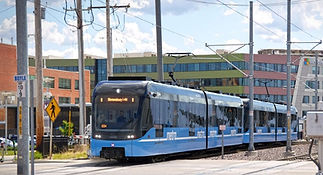California's High-Speed Rail Project Charts New Course Toward Commercial Success
California's bold new plan for high-speed rail shifts to connect major population centers quickly and innovate funding models for commercial success. These changes focus on long-term viability for the nation's first high-speed passenger rail system.

August 26, 2025
Ryan Pecaut
In a move that could serve as a model for large-scale rail projects nationwide, the California High-Speed Rail Authority has released a new supplemental report outlining a significant change in strategy for its ambitious statewide network. The report, which provides a fresh look at project delivery, funding, and financial viability, signals a new, more pragmatic direction for the nation's first true high-speed rail system.
Instead of simply building the statutorily required Merced-Bakersfield segment as a standalone line, the Authority is now focused on a path to connect major population centers and demonstrate commercial success as early as possible.

A Strategic Pivot Toward Viability
At the direction of its new CEO, Ian Choudri, the Authority has completed a holistic reassessment of the program. This review led to a new focus on building a commercially viable system as quickly as possible, aiming to maximize the return on California's investment.
The report presents three main scenarios for development, with each one offering a different level of ridership and revenue potential:
Merced-Bakersfield: The initial 171-mile segment, which is currently under construction and has a revised cost estimate of $36.75 billion. The report indicates this segment alone would not be profitable, resulting in a recovery ratio of just 45% to 74% annually.

Gilroy-Bakersfield: This option costing $54.4 billion extends the line north from the Central Valley to Gilroy, relying on an enhanced Caltrain corridor to provide through service to San Francisco by 2038. This scenario is projected to be commercially successful, with a recovery ratio of 164% to 257%.

Gilroy-Palmdale: The most ambitious scenario at a cost of $87.12 billion would extend the high-speed rail infrastructure from Gilroy all the way to Palmdale by 2038, connecting with existing Metrolink services to reach the Los Angeles area. The report projects this option would be highly profitable, with a recovery ratio of 191% to 314%.

Building a Financially Sustainable System
A major part of the new strategy is leveraging "ancillary revenues" and "asset commercialization". The Authority plans to generate income from sources beyond ticket sales, such as real estate development around stations and leasing its right-of-way for fiber-optic lines and other utilities. These revenues, along with a proposed dedicated and stable funding source from the state's Cap-and-Invest program, are seen as the key to attracting private investment through Public-Private Partnership (P3) models.
To reduce overall project costs and accelerate delivery, the Authority is also implementing a "right-sizing" approach. This involves refining the design criteria, such as adjusting the maximum design speed from 250 mph to the operational speed of 220 mph, and allowing for steeper track gradients to shorten the length of expensive tunnels and viaducts.
This report follows recent news of the USDOT pulling back funding from the project citing it as a boondoggle following a review showing a project estimate of $135 billion.

Ryan Pecaut
Ryan Pecaut is the Communications Strategy Lead at All Aboard Ohio
ABOUT ALL ABOARD OHIO
All Aboard Ohio is a non-profit, member-based organization dedicated to promoting improved public transportation and passenger rail service throughout the state.
Founded in 1973 and incorporated as a registered 501c-3 in 1987, All Aboard Ohio has spent more than 50 years advocating, educating, and working towards our goal of a connected Midwest
All Aboard Ohio is a 501c-3 nonprofit with over 50 years of advocacy work, advocating for improved public transportation and passenger rail service in the Midwest
©2025 by All Aboard Ohio
Get in Touch
3136 Kingsdale Center,
#112 Columbus, OH 43221
Federal Tax ID: 31-1066182








